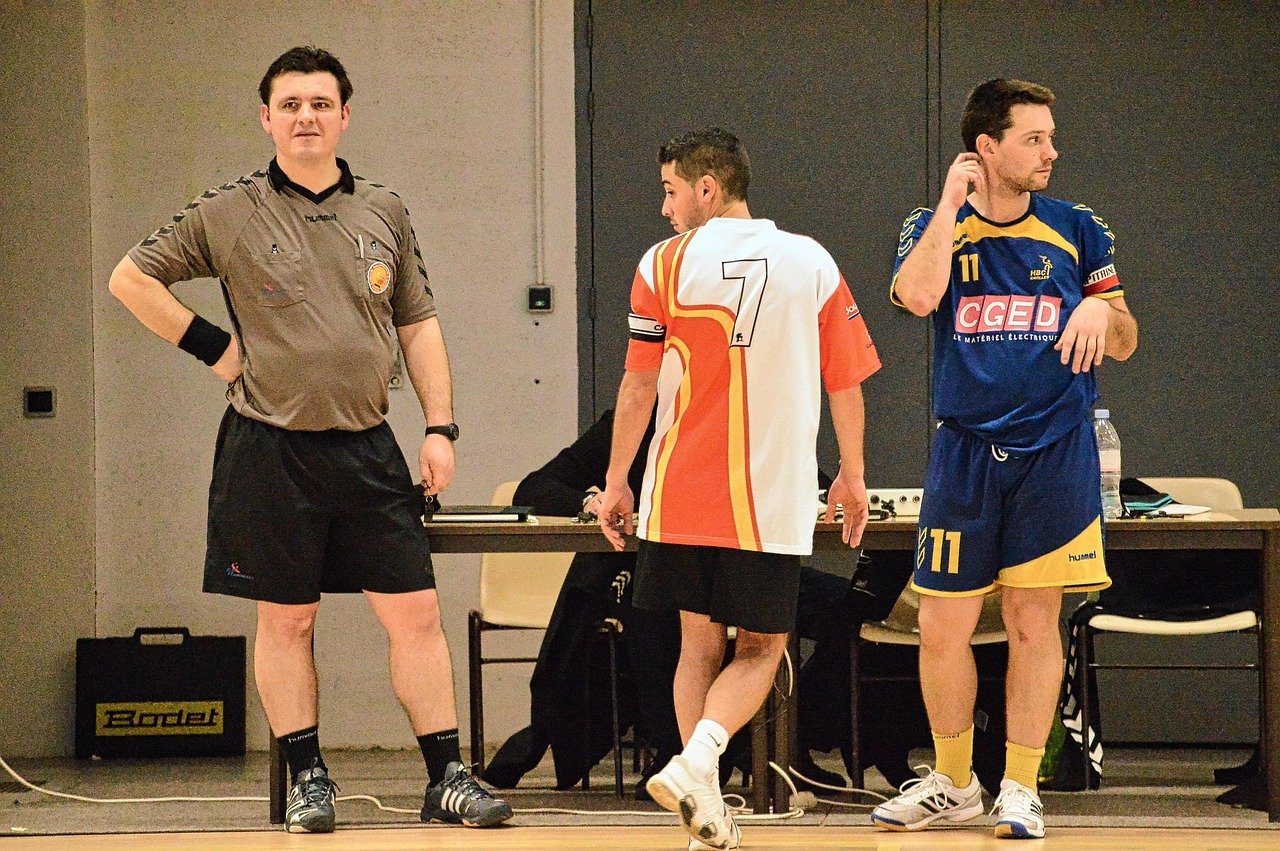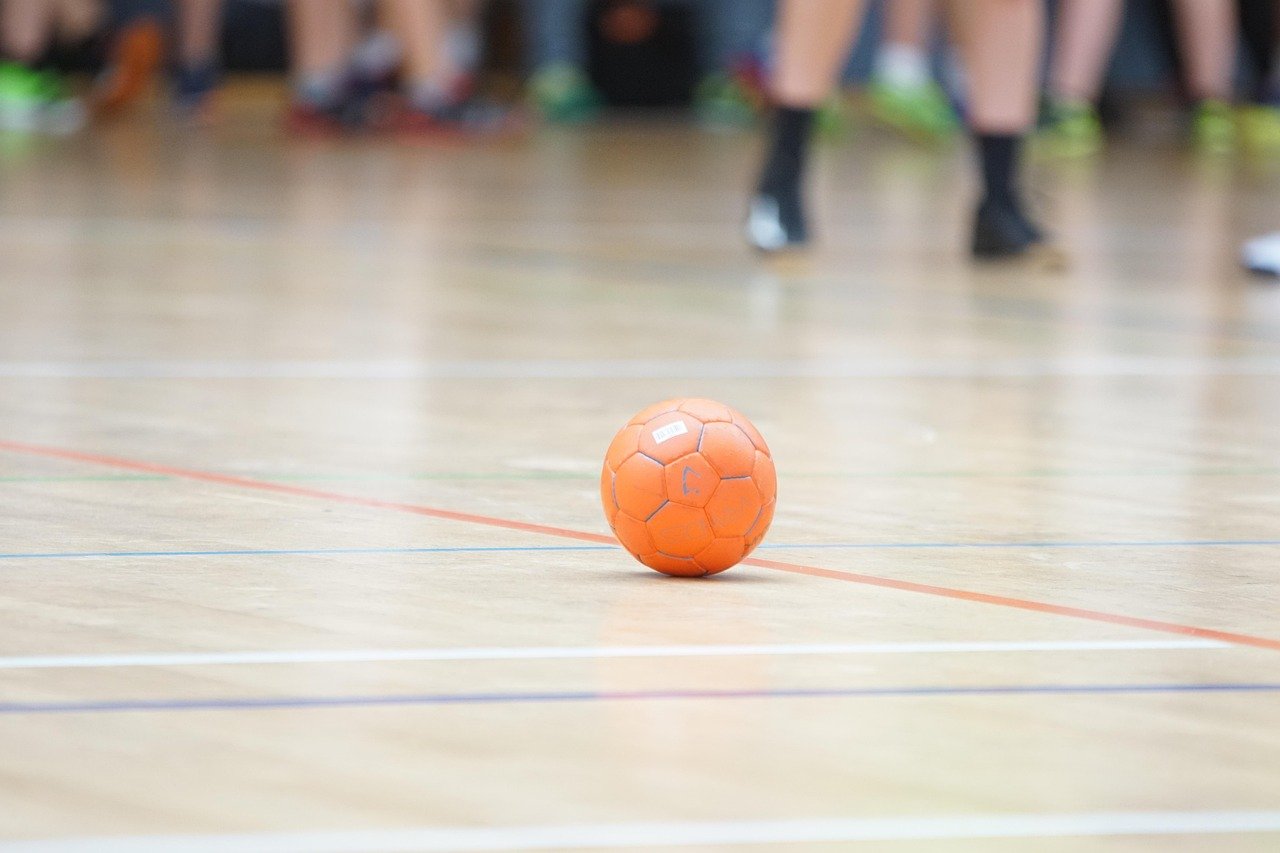The 3-3 defence in handball is a high-pressure defensive system that pushes defenders far out from their goal to disrupt the attacking team early. Unlike more compact formations, it spreads defenders evenly across the court in two staggered lines, making it ideal for aggressive teams looking to force turnovers.
Understanding the 3-3 Formation
In a 3-3 defence, three defenders position themselves along the 9-metre line, while the other three play even further out, often marking opponents closely. This creates a wide and advanced defensive wall that challenges attackers before they reach shooting range.
The 3-3 can be visualised as two horizontal lines:
- Front Line (High Press): Disrupts passing lanes, pressures ball carriers, and forces risky passes.
- Back Line (Cover): Provides depth, blocks breakthroughs, and supports high defenders if opponents get past them.
Player Roles in the 3-3 Defence
Each player in this system has specific tasks to maintain its structure and effectiveness:
Front Line Defenders
- Mark attackers closely, often outside the 9-metre line.
- Force opponents to make lateral passes rather than penetrating forward.
- Apply constant pressure to ball carriers to limit decision-making time.
Back Line Defenders
- Provide immediate cover if an attacker beats a front-line defender.
- Step forward to intercept or challenge passes.
- Maintain a clear view of the pivot and the ball at all times.
Goalkeeper
- Communicates defensive adjustments.
- Reads the game to anticipate long-range shots.
- Organises the defence during transitions.
Advantages of the 3-3 Defence
The 3-3 is an aggressive and energy-intensive system that suits fast, athletic teams.
- High Pressure: Forces attackers to play at a faster pace, increasing mistakes.
- Turnover Potential: Creates interception opportunities in high-risk passing zones.
- Flexibility: Can quickly transition into a fast-break attack.
Weaknesses of the 3-3 Defence
This system also comes with challenges, particularly against skilled or patient attacks.
- Vulnerability in Depth: The large spaces between defenders can be exploited by quick passes or strong pivots.
- Energy Demands: Requires high stamina to maintain constant movement and pressure.
- Risk of Isolation: If one defender is beaten, attackers can quickly create numerical advantages.
When to Use the 3-3 Defence
The 3-3 is most effective when:
- Your team needs to disrupt an opponent’s rhythm.
- You are facing less experienced ball handlers.
- You want to maximise turnover opportunities to fuel counterattacks.
It is less suitable against disciplined, high-skill passing teams who can exploit gaps.
Drills to Practise the 3-3 Defence
1. Close-Out and Recover Drill
Players start in a 3-3 shape. The coach passes to different attackers, and defenders close down the ball before quickly recovering to position. This improves reaction time and recovery speed.
2. Passing Lane Interception
Defenders work on reading the attacker’s eyes and body language to anticipate passes, stepping in for interceptions without losing shape.
3. Two-Line Rotation Exercise
The front line applies pressure, then rotates with the back line after a set number of passes, ensuring all players can play both roles.
4. Pivot Tracking Drill
Back-line defenders work specifically on monitoring the pivot while helping in front-line pressure when needed.
Final Thoughts
The 3-3 defence is a bold, proactive approach that can unsettle opponents and create scoring opportunities through turnovers. It demands communication, fitness, and precise timing from every player. When executed well, it transforms defence into a weapon, but when gaps appear, it can quickly be punished.



